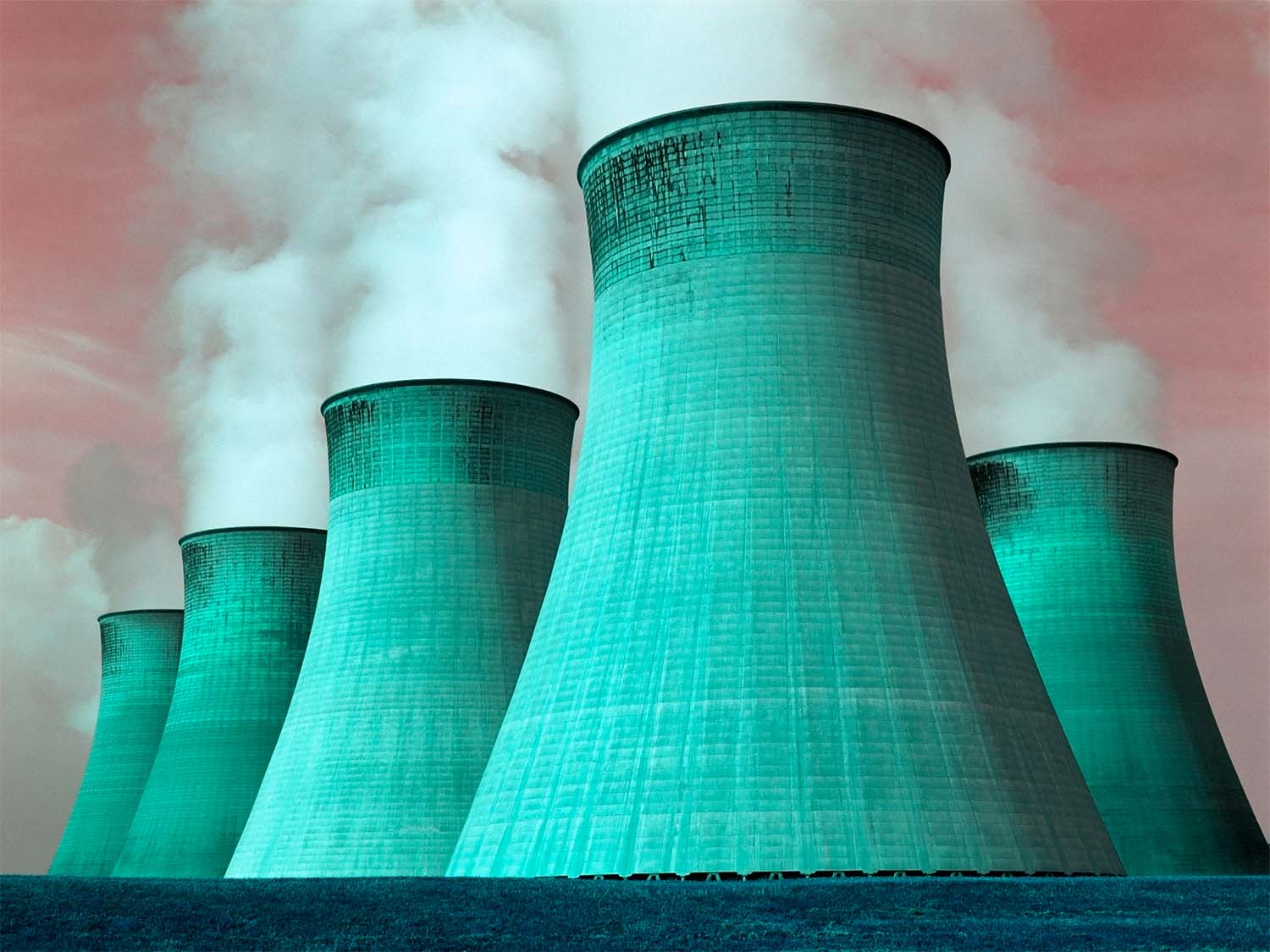Why Many Cooling Towers Have a Hyperboloid Shape

For those who’ve ever spotted the cooling towers at a nuclear power plant, large factory, or other large application – you probably noticed a unique shape. The shape is wider at the base and top of the structure and curved in the center to form a quasi-hourglass. It almost appears to be a cylinder that has been cinched in the middle. This shape is referred to as a hyperboloid, and it provides a perfect option for crafting efficient and long-lasting cooling towers. Over the years, tower design has evolved as new science emerged and new technologies were introduced. Architects and engineers have updated the raw materials used, draft configurations, etc. However, the hyperboloid shape remains consistent. Before understanding why this shape continues to be popular, it is important to get a grasp of the mathematics behind its formation.
What is a Hyperboloid Shape?
To better understand what a hyperboloid shape looks like and how it’s designed, it’s important to understand the geometry behind it. While it is easy to imagine a cylinder twisted in the middle to form an hourglass, the design behind it goes a bit further. A hyperboloid is considered a doubly-ruled surface, meaning that two straight lines can be drawn on the surface of the shape passing through any given point. Even though the shape as a whole is curved, those straight lines always exist.
A hyperboloid can also be expressed mathematically using the following formula: x2/a2 ± y2/b2 − z2/c2 = 1
It’s a complicated shape, but one that has many applications, especially in architecture, large water towers, and in our case – cooling towers. But, why does the hyperboloid shape provide a great option when it comes to crafting large cooling towers?
Why are Large Cooling Towers Often Shaped as a Hyperboloid?
Engineers consistently create cooling towers with that classic hyperboloid shape, but what is their reasoning? Much of it comes from the impact of shaping a tower this way on its overall strength. During the cooling process, water evaporates as heat transfers to it. For evaporation to be successful and not result in vapors re-circulating through the tower, towers need a certain amount of height. As you create towers of increasing height, it’s even more critical that the bases of these units are adequately wide enough to support the height (and weight) of the tower it holds. Having a wider base also allows for easier installation and maintenance, as well as better protection against potentially-disastrous natural forces such as tornadoes and hurricanes.
If supporting tower size was the only factor, then possibly a cylindrical tower shape would suffice in most applications. However, there is another factor needing consideration. In large towers, the evaporated water has far to travel before leaving the unit at the top. With a cylindrical shape, that process would happen slowly. A hyperboloid shape on the other hand encourages vapor to travel more quickly. As the tower narrows in the middle, vapor speeds up as a result of laminar flow – as parallel vapor layers flow upwards simultaneously without any disruption.
Still, with laminar flow in effect, why do engineers widen towers again at the top? Because it allows for more area in which the rising vapor from the tower to then mix with the external air via diffusion.
Selecting and Maintaining an Ideal Tower with Cooling Tower Experts
While the hyperboloid certainly remains one of the most widely used shapes for cooling towers, it’s not a one size fits all solution. In fact, selecting the right cooling tower (including size, configuration, shape, etc.) is a tedious process and one that requires expertise and industry experience in order to make the best decision.
In addition to simply choosing the right tower, properly installing, operating, and maintaining that tower all help to keep it running smoothly and efficiently for many years post-installation. In cases where units are neglected and not properly maintained, it can take extreme efforts and significant repairs and component replacements to get them back in good working order.
The main reason cooling towers receive such neglect is a lack of proper training on the correct operation and preventative maintenance efforts required. Luckily, Cooling Tower Experts offers a full suite of training opportunities for tower owners and operators, as well as comprehensive maintenance packages we’ve created to identify small issues before they escalate in severity and lead to costly repairs or replacements. These plans keep your tower running smoothly, efficiently and reduce the potential for failures over its lifespan.
Whether you are looking to consult with experts on cooling tower design, need additional training for operators, or have a cooling tower not functioning as intended, partnering with a team of industry leaders is the best way to ensure your facility is set up for success. The folks at Cooling Tower Experts bring years of training and experience in the field, making them perfect partners for your next cooling tower project. Contact us today to learn more or start your next project.